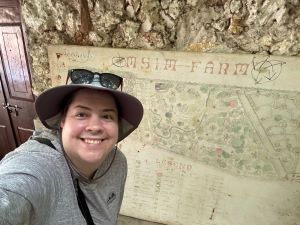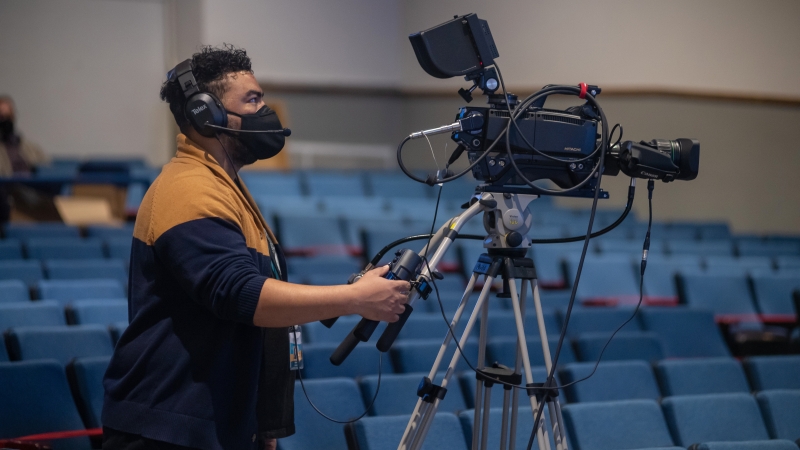
Orphaned Elephants and African Geography: How One Teacher Spent Her Summer Vacation
“The study of geography is about more than just memorizing places on a map. It’s about understanding the complexity of our world, appreciating the diversity of cultures that exist across continents. And in the end, it’s about using all that knowledge to help bridge divides and bring people together.” — Barack Obama
Petting baby elephants and learning how they can coexist with humans. That’s a highlight of this summer’s break for Frances Coffey, an AP Human Geography teacher at Chantilly High School (at right in above photo).
As part of the East Africa Summer Institute for Educators, Frances visited Sheldrick Wildlife Trust in Kenya, where orphan elephants are raised and eventually reintegrated into a protected wilderness. In addition to petting the baby elephants and watching them be bottle fed, they learned how the animals are impacted due to human population pressures and environmental changes.
Through this program — which is supported by the United States Department of Education & Bureau of Cultural Affairs' Fulbright-Hays Group Projects Abroad (GPA) grant program — Frances was among a dozen educators from Virginia who spent four weeks in Tanzania and Kenya, visiting nine cities, for immersive and intensive curriculum development. The participants worked with local universities, primary schools, and organizations to gain first-hand experience with East African culture and to develop new curricula through collaboration with local experts.
The institute focused on agriculture, natural resources, and the UN’s Sustainable Development Goals (SDGs). Frances explained that those goals are “fundamental concepts” in the AP Human Geography curriculum.
 “As an AP Human Geography teacher, I strive to showcase regions like East Africa that are traditionally underrepresented in curricula,” she said. “I aim to broaden and deepen students’ understanding of sustainability. All too often, students conceptualize sustainability in narrow terms like recycling and using less household energy. It’s important for students to understand the political, social, economic, and environmental dimensions of global sustainability.”
“As an AP Human Geography teacher, I strive to showcase regions like East Africa that are traditionally underrepresented in curricula,” she said. “I aim to broaden and deepen students’ understanding of sustainability. All too often, students conceptualize sustainability in narrow terms like recycling and using less household energy. It’s important for students to understand the political, social, economic, and environmental dimensions of global sustainability.”
As a result of her summer trip, Frances is developing a curriculum for AP Human Geography in which students will explore sustainable geography challenges and successes in Tanzania and Kenya. One perspective she intends to share with her students is what sustainable practices look like in different regions.
“All too often the U.S. media highlights negative news in Africa like political strife and poverty, while ignoring or underplaying positive news,” she said. “Based on this trip, my students will learn about successful, sustainable efforts in East Africa, like the Practical Permaculture Institute of Zanzibar (PPIZ). PPIZ not only promotes food and water security, but also empowers women and teaches them practical, hands-on permaculture skills. For example, they learn to build swales [channels to manage water runoff] and use natural pesticides.”
The program was created by Virginia Tech’s Global Education Office. Through the East Africa Summer Institute, Virginia Tech faculty, future educators, and Virginia public school instructors started developing curricula that will give students a more in-depth, up-to-date, and accurate understanding of East African culture and history.
Place-based institutes, like her summer trip, “help teachers better understand the world’s complexities to make student learning experiences more interesting and meaningful,” Frances said. “I am indebted to the Chantilly High School administration — particularly Principal Amy Goodloe and Assistant Principal Jihoon Shin — for supporting my participation in this program.”
What was the highlight of your summer? Share with us, and you may be featured in the Employee Blog! Did you take an interesting trip? Did you enjoy more time with your family? Did you simply take a break from technology and answering email? Tell us more by completing the form below or email your story and photos to [email protected].






